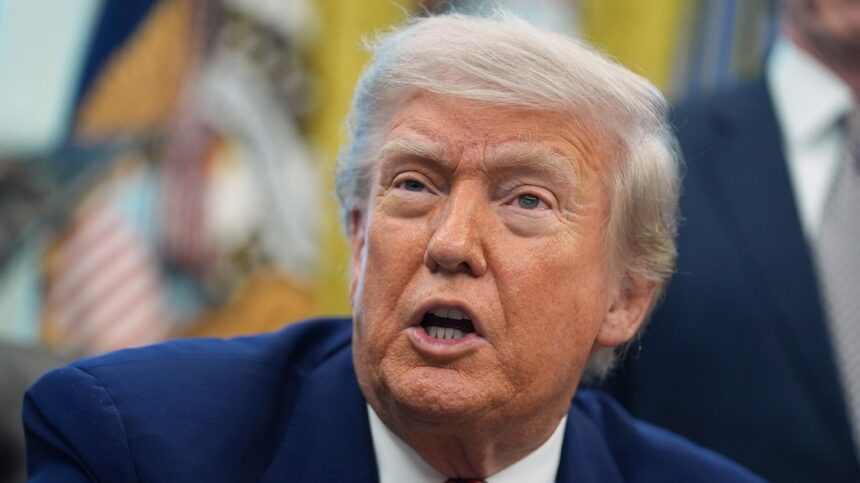In a seismic shift for North American trade relations, President-elect Donald Trump has announced plans to impose a sweeping 35 percent tariff on all Canadian imports once he returns to office in January. The bombshell declaration sent immediate shockwaves through financial markets and diplomatic channels, potentially unraveling decades of carefully cultivated economic integration between the two neighboring nations.
“On January 20th, as one of my many first Executive Orders, I will sign all necessary documents to charge Canada, and Mexico, a 25% Tariff on ALL products coming into the United States,” Trump declared on his Truth Social platform late Monday. He later escalated his threat specifically against Canada, stating, “Additionally, I’ll add another 10% Tariff to Canada until they stop allowing the massive inflow of drugs, in particular Fentanyl, to flow across our Border.”
The announcement represents a dramatic escalation from the trade tensions that marked Trump’s first administration, when Canada faced targeted tariffs on steel and aluminum but escaped broader punitive measures. According to Statistics Canada, the two nations exchanged approximately $800 billion in goods and services in 2023, with Canada sending roughly $500 billion in exports southward – all of which would now be subject to significant price increases.
Financial analysts at Toronto-Dominion Bank estimate that if implemented, such tariffs could slash Canadian economic growth by up to 2 percentage points over the next year. “This isn’t just about trade numbers on a spreadsheet,” explains economist Avery Richardson. “We’re looking at potentially devastating impacts on integrated supply chains, manufacturing jobs, and consumer prices on both sides of the border.”
The Canadian business community reacted with immediate concern. The Business Council of Canada called the proposal “economically destructive for both nations” while urging the Trudeau government to engage in immediate diplomatic outreach. Meanwhile, the Canadian Manufacturers & Exporters association warned that nearly 2 million Canadian jobs directly tied to U.S. exports could face significant risk.
Prime Minister Justin Trudeau responded cautiously during a press conference in Ottawa, stating, “Canada and the United States enjoy the most successful trade relationship in the world. Our integrated economies support millions of middle-class jobs on both sides of the border.” He added that his government has “successfully navigated complicated trade situations with the previous Trump administration” and expressed confidence in finding constructive solutions.
Trade experts note that Trump’s claim about fentanyl flowing from Canada into the U.S. contradicts established data. According to the U.S. Drug Enforcement Administration’s own reporting, the vast majority of illicit fentanyl enters the United States through Mexico and via maritime routes from China, with Canadian sources representing a negligible percentage.
The announcement has triggered renewed examination of the United States-Mexico-Canada Agreement (USMCA), the trade deal that Trump himself negotiated to replace NAFTA during his previous term. Legal scholars question whether unilateral tariffs of this magnitude would violate that agreement, potentially opening the door to retaliatory measures from both Canada and Mexico under international trade law.
For everyday consumers, the implications could be profound. Canadian goods flow into virtually every sector of the American economy – from automobiles and energy to food products and raw materials. Trade economists project potential price increases of 20-30% on many consumer goods if the full tariff burden is passed along to American shoppers, potentially worsening the inflation concerns that figured prominently during the recent election.
As both nations prepare for this potential economic confrontation, the question remains: will Trump’s bold tariff gambit achieve his stated policy goals, or will it simply unravel one of the world’s most integrated and mutually beneficial economic partnerships at a time when global competition demands stronger alliances?

























